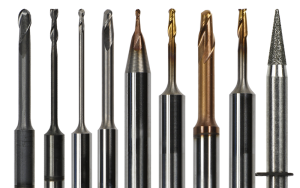
Pfefferkorn argues that, in fact, the geometric characteristics of the micro-tool are not as precise as desired, “the radius of the cutting edge of the miniature end mill is already greater than we would expect from the chip load produced during cutting.”
In addition to working with researchers with experience in hot-wire CVD deposition, the team chose this deposition process because the thickness of the coating deposited by other CVD methods, such as plasma-based deposition processes, The multi-material is deposited on the tip, Pfefferkorn says, “Growing a sphere on a sharp cutting edge like a dog’s bones. I’m not saying that hot wire CVD is the only way to use it, The reason is because it does not produce this ‘dog bone effect’. ”
The coating is not only thinner. And must have good adhesion with the matrix, but also should be continuous and smooth, although the latter feature is difficult to quantify. “We are trying to eliminate the limitations of building suitable models for smoothness,” says Carpick. “So we can not know exactly how smooth the coating needs, and we think that a little bit rough may be useful because it may Helping to prevent the workpiece material from sticking to the tool.
Since the nanocrystalline diamond coating can be very thin, it can be adapted to the surface morphology of the substrate, including the grinding of the tool grinding and the cracks caused by the etching process. The micron grain coating can cover these surface defects. Pfefferkorn said, “micro-tools have been quite rough, we do not need to make them more rough.”